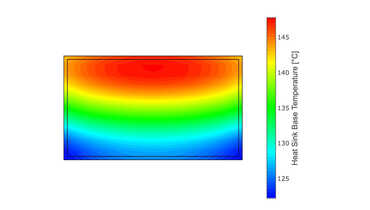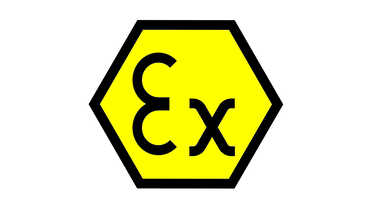For devices like extreme temperature touch screens, which we rely upon in demanding industrial applications, ensuring they last and perform optimally is non-negotiable. An insightful discussion recently shed light on the durability of conductive touch screen traces, specifically comparing silver ink printed conductive traces and Molybdenum Aluminum Molybdenum (MAM) conductive traces. The conclusion? MAM emerges as the superior choice for those seeking durability and long-term performance. Here's why.
The Context: 85/85 HAST Test
To set the stage, we first touched upon the significance of the 85/85 HAST test, an accelerated reliability test method. This test exposes electronic components, such as touchscreen conductive traces, to conditions of 85°C (185°F) and 85% relative humidity. Such extreme conditions simulate the long-term reliability of electronics, fast-tracking potential defects and weaknesses.
IEC/EN 60068-2-78 is wonderful test procedure to give you a guideline to design your HAST Test.
Touch Screen Silver Migration
One of the primary concerns with silver ink printed conductive traces in touch screens is silver migration. This phenomenon occurs under the influence of an electric field, where silver ions migrate, forming dendrites or tiny metallic filaments. This migration can lead to short circuits, severely hampering the device's performance.
The challenge intensifies under the conditions of the 85/85 HAST test. Moisture and high temperatures considerably speed up the rate of silver migration. Thus, when subjected to such stringent testing, the silver ink printed conductive traces, rich in silver, reveal their susceptibility to this adverse reaction.
Why MAM Stands Out
Molybdenum Aluminum Molybdenum (MAM), a stack structure of thin films typically sputtered onto substrates, emerges as the more reliable alternative. There are several reasons for this:
Inherent Stability: Unlike silver, the metals in MAM - Molybdenum (Mo) and Aluminum (Al) - don't have the same susceptibility to electrochemical migration. This stability makes MAM a favorable choice, especially in applications where resistance to environmental stressors is vital.
Purpose-Driven Application: While silver ink conductive traces often find favor due to their conductivity, cost-effectiveness, and ease of application, MAM conductive traces are favored where durability and longevity take precedence. Their robustness against environmental factors makes them an invaluable choice for high-performance applications.
Performance Under Test Conditions: When subjected to the challenging environment of the 85/85 HAST test, MAM's resistance to factors such as silver migration becomes evident. Its reliability and performance under stress solidify its position as the superior choice.
Powering On while testing
An important note to add is the necessity of having the device operational during testing. The silver migration process needs electricity to occur. Without this electric field, even in moisture-rich environments, silver ions remain stagnant. Thus, for accurate assessments of silver migration risks or to evaluate any other electrically influenced failure mechanisms, devices must be powered on during the test. This ensures a comprehensive evaluation of potential issues under real-world or accelerated conditions. Some touch screen controllers have a power savings mode enabled after a certain time interval. A touch screen in sleep mode will likely render the test obsolete. It makes sense to disable this mode or to trigger touch events in short time periods.
Time is important
Silver migration is a slow process and running the test period to short is not reccomended. But how lond is long enough ?
The duration for which a Highly Accelerated Stress Test (HAST) should be performed can vary based on several factors:
Objective of the Test: The primary goal of the test will guide its duration. If you're aiming for early failure detection in a new design, the test duration might be shorter. Conversely, if you're looking to simulate the entire expected lifespan of a product in accelerated conditions, the test will naturally be longer.
Product/Application: The type of product or application and its intended lifespan will also influence the test's length. For instance, consumer electronics expected to last a few years might undergo a different HAST duration compared to industrial equipment meant to last decades.
Specific Standards or Guidelines: If you're adhering to certain industry standards or guidelines, they might specify recommended durations for HAST or similar tests.
Previous Test Data or Historical Data: If you have previous test data or historical data on similar products or components, it can provide insights on appropriate test durations.
Accelerated Factors: Remember, HAST is an accelerated test, meaning it simulates prolonged stress in a short period. Determining how the accelerated conditions correlate to real-world time can help set the test duration. For instance, if 100 hours in a HAST chamber corresponds to one year of real-world use (hypothetically), and you aim to test a product's five-year durability, you might run the test for 500 hours.
Generally, common HAST test durations you might encounter in the industry range from 96 hours to 1,000 hours or more, depending on the above factors.
However, it's essential to consult with reliability engineers, study industry-specific guidelines, and consider the specific nuances of the product being tested. Customizing the test duration based on these factors will ensure meaningful, actionable results.
MAM the Durability Champion
Touchscreen technology is only as good as its durability. In environments that demand top-tier performance, stability, and longevity, the choice between silver ink and MAM conductive traces becomes clear. MAM, with its inherent resistance to challenging conditions and proven performance in the 85/85 HAST test, positions itself as the leading choice for durable touchscreen conductive traces. For manufacturers and consumers alike, opting for MAM means embracing reliability and future-proofing devices against potential failures. In the context of durability and reliability, MAM undoubtedly takes the crown.




